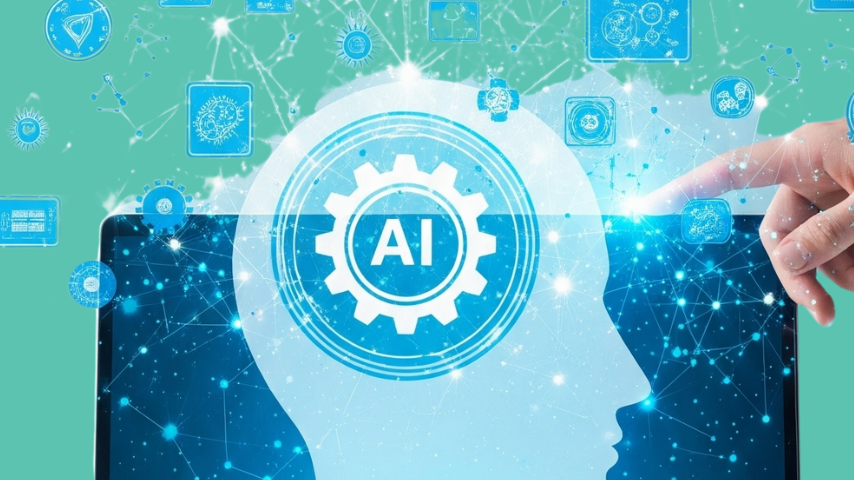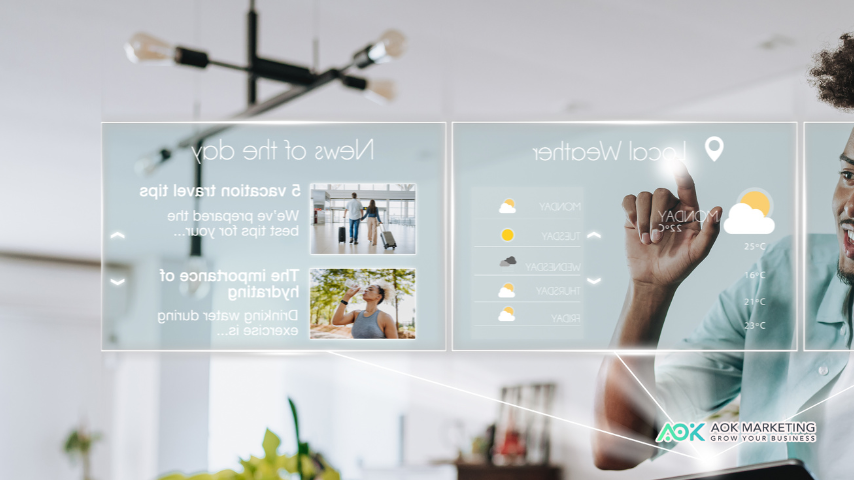Artificial intelligence is no longer an emerging trend — it’s the backbone of digital transformation across industries. As we approach 2026, AI’s influence will extend far beyond chatbots, content generation, or data analysis. It will define how businesses operate, how people work, and even how creativity is expressed.
Here are 10 bold predictions for AI in 2026 — insights that reveal where the technology is heading, and what organizations must prepare for.

1. AI Will Become a Core Business Partner, Not Just a Tool
By 2026, AI won’t just assist employees — it will collaborate with them. From strategic decision-making to customer insights, businesses will rely on AI systems as active partners in growth and innovation.
Advanced predictive models will handle scenario planning, risk assessment, and performance forecasting, helping executives make smarter, faster decisions. This “co-pilot” era means companies will shift from using AI to working alongside it.
2. Generative AI Will Redefine Creativity Across Industries
Generative AI is evolving from producing simple text or art into a force that transforms entire creative workflows. By 2026, AI will help conceptualize ad campaigns, compose music, design physical products, and even generate 3D environments for film and gaming.
Brands will integrate AI not just for efficiency but for creative amplification — blending human imagination with algorithmic innovation. In marketing, AI tools will tailor brand visuals and tone to match audience sentiment in real time, creating deeply personalized experiences.
3. AI Regulation and Ethical Frameworks Will Mature
As AI adoption grows, so does the need for accountability. In 2026, expect to see mature global AI governance frameworks that set boundaries for responsible development and usage.
Governments and organizations will collaborate on ethical standards to regulate AI’s use in surveillance, recruitment, healthcare, and finance. Companies will be required to maintain AI transparency reports — documenting data sources, bias testing, and decision-making logic.
Ethical AI won’t be optional; it will become a competitive differentiator and compliance requirement.
4. Multimodal AI Will Become the Norm
The next generation of AI systems will think beyond words. Multimodal AI, capable of understanding text, images, voice, and even gestures simultaneously, will become mainstream by 2026.
This means digital assistants that interpret tone and facial expression, customer service bots that recognize visual cues, and search engines that combine voice prompts with image-based queries.
Businesses will need to optimize not just text data but all forms of communication to engage users effectively in this new, sensory-rich AI environment.
5. Artificial General Intelligence (AGI) Will Edge Closer to Reality
While full AGI — machines that think and reason like humans — may still be years away, 2026 will mark major breakthroughs toward that goal.
Expect to see prototype systems capable of reasoning across multiple domains without task-specific training. These hybrid AI models will combine large-scale reasoning with self-learning capabilities, allowing them to adapt in unfamiliar scenarios.
Although AGI won’t be fully realized, 2026 will be the year it stops feeling theoretical and starts becoming tangible.
6. AI-Driven Personalization Will Redefine Customer Experience
By 2026, personalization powered by AI will reach new heights. Every interaction — from online shopping to streaming to education — will feel uniquely designed for the individual.
AI will process billions of micro-interactions to anticipate what customers need before they even ask. Recommendation engines will factor in context, emotion, and behavior, crafting experiences that feel intuitive and human.
The challenge for businesses will be maintaining privacy and trust while delivering this hyper-personalized intelligence.
7. Automation Will Transform the Workforce — and Create New Roles
Contrary to fears of job loss, AI-driven automation will reshape rather than erase work. By 2026, repetitive or data-heavy tasks will be almost entirely automated in sectors like finance, logistics, and customer support.
However, this shift will give rise to new job categories — AI trainers, ethicists, explainability experts, and human-AI interaction designers.
Companies that invest in reskilling and adaptive learning will thrive, while those that resist change risk being left behind. The future of work will be collaborative, not competitive.
8. AI in Healthcare Will Move from Diagnosis to Prevention
Healthcare will be one of the biggest beneficiaries of AI in 2026. Machine learning models will not only detect diseases but predict them.
AI systems will analyze patient history, lifestyle patterns, and genetic data to flag early signs of potential conditions — long before symptoms appear. Remote diagnostics and wearable health monitors will become standard, providing real-time updates to medical professionals.
The result: a healthcare system that shifts focus from treating illness to preventing it.
9. AI Security Will Become a Top Priority
As AI becomes more integral to business operations, AI-powered cyber threats will rise. Deepfakes, data poisoning, and adversarial attacks will force companies to rethink cybersecurity from the ground up.
By 2026, organizations will deploy defensive AI — algorithms that detect and neutralize other AI-based threats in real time. Cybersecurity teams will rely on self-learning models that continuously evolve to counter emerging attack patterns.
The race between malicious AI and defensive AI will define the next frontier of digital security.
10. AI Will Drive the Next Green Revolution
Sustainability and AI will merge by 2026. Advanced algorithms will optimize energy consumption, waste management, and resource distribution across industries.
AI will power smart grids, forecast weather patterns with extreme accuracy, and enhance climate modeling for global policy planning. In agriculture, AI-driven drones and sensors will monitor soil health, reduce water waste, and increase yield sustainably.
By marrying environmental goals with digital innovation, AI will become a cornerstone of the green economy — accelerating humanity’s path toward sustainability.
A Glimpse Into the AI-Driven Future
AI in 2026 will be defined by intelligence that’s contextual, ethical, and creative. It will no longer operate behind the scenes — it will be a visible, trusted collaborator in everyday decision-making.
Businesses that adapt early will lead the charge in this new era, while those that hesitate may struggle to remain relevant. The coming years will demand balance — blending human empathy with machine precision, innovation with responsibility, and automation with ethics.
As AI continues to evolve, one truth stands clear: the future won’t just be powered by artificial intelligence — it will be shaped by how wisely we use it.
About The Author
Marketing Team
The AOK Marketing Team is a diverse group of amazing individuals driven to help all of our clients succeed. Great people are everywhere, and we believe that people should control their workday, their work environment, and where they live. We have team members in 9 countries: United States, Canada, Egypt, Belgium, Ireland, Australia, India, Pakistan, and Hong Kong.
How can we help you?





